Our heads of junior research groups at FAU (FAUngl)
Our heads of junior research groups at FAU
Our heads of junior research groups at FAU
PD Dr. Dr. Ferdinand Knieling
Name of the junior research group: Translational Pediatrics
Research topic: Using novel customized imaging technologies to detect, understand and improve the treatment of diseases

With his working group, PD Dr. Dr. Ferdinand Knieling is working on the next generation of imaging techniques.
Breakthroughs in treatments, especially for diseases that begin early in life, facilitate targeted treatments for conditions previously considered incurable. Nevertheless, it is still often difficult for doctors to predict how successful treatment may be and to give patients a favorable prognosis. Imaging methods are an important tool for diagnostics in order to gain information from inside the body that is as precise and as detailed as possible. The use of such technologies on young patients is often associated with risks or is extremely difficult from a technical point of view.
The working group is therefore conducting research into methods that make it possible to gain information that is as detailed as possible from tissue in very young patients. The group is particularly interested in the early detection of inflammatory processes, monitoring new therapies and the detection of tissue remodeling processes. It is focusing in particular on research into chronic and rare diseases, the understanding of which is still inadequate today. The results should help to throw light on the processes behind disease, improve understanding of the effectiveness of new medication and monitor therapies over the long term.
Dr. Patrick Schühle
Name of the research group: Catalytic Systems for Chemical Energy Storage

In his junior research group, Dr. Patrick Schühle is developing new catalysts and technologies for chemical hydrogen production and storage. The BMBF junior research group FAIR-H2 has the goal of efficient decentralized production of hydrogen from biogenic, aqueous formic acid in sufficiently high purity for energetic use. To this end, new technologies for hydrogen production and purification are to be developed to market maturity. The so-called OxFA process is already capable of producing high yields of aqueous FA on a ton scale through the catalytic oxidation of wet biomass wastes (e.g. sewage sludge, industrial waste) under mild conditions. Biogenic hydrogen is bound in formic acid and can therefore be transported and stored in a safe and compact form. The on-demand release of hydrogen from aqueous formic acid is possible under very mild conditions and is therefore extremely energy-efficient. However, highly active and stable catalysts are required for this. For this reason, the FAIR-H2 project is developing and investigating solid catalysts in their operating environment. The focus here is on extremely robust metal phosphide catalysts, which are a core interest of the junior research group. With the help of these new catalysts, hydrogen production from biogenic formic acid is to be made possible using both a one-stage and a two-stage process. Dr. Schühle’s junior research group is also working on the use of dimethyl ether (DME) as a chemical hydrogen transport vector. By binding green hydrogen in DME, it can be transported economically and safely over long distances. At the destination, the hydrogen is released via catalytic steam reforming of the DME. New catalyst and reactor concepts for this reaction are being developed in the working group.
Dr. Saskia Schimmel
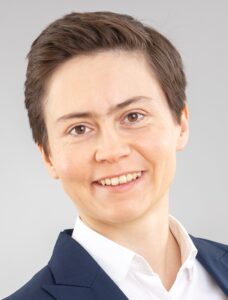
Research topic: New nitride materials for electronic components
Compared to established III nitrides, novel nitride semiconductors provide an extraordinarily wide range of additional physical properties (e.g. piezo-electric, ferro-electric, magnetic, superconducting). These materials are currently in the early stages of basic research and technological development. In contrast, some binary III nitrides such as GAN are already being used in commercial electronic devices. Research into new nitride materials and how to combine them with III nitrides could offer greater flexibility for electronic components based on GAN technology. Among these materials, the group’s research focuses on wide band-gap semiconductors, which hold significant potential for improving the energy efficiency of electronic components in energy conversion applications. Efficient conversion of electrical energy is and will continue to be an important topic in the future since the proportion of electrical energy in our total energy usage is increasing. This increase is due to the electrification of various processes both in industry and in the transport sector. Electrification is motivated by the necessity to reduce CO2 emissions. This group addresses the gap between fundamental research of the synthesis and the properties of new nitride materials and research into how they can be used in electronic components.
Dr. Lisa Deloch
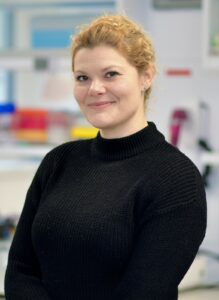
Name of the junior research group: Radiation and osteoimmunology
Dr. Lisa Deloch works with her junior research group on investigating the anti-inflammatory, immune modulating and osteoimmunological effects and risks of low doses of radiation.
The group focuses on discovering the mechanisms behind the immune modulating and analgesic effects of low dose radiation therapy on benign medical conditions. In addition, as part of the NukSiFutur junior research group called “TOGETHER” funded by the Federal Ministry of Education and Research, the group investigates the (osteo) immunological gender and age-specific characteristics of sensitivity to radiation as well as the consequences of this for potential developments in radiation protection. The aim is to create a foundation with which the existing limits for protecting the general population and those exposed during their work can be extended while taking age and gender specific components in healthy and inflamed tissue into consideration. In addition to X-ray radiation, the group uses radon, mixed-beam radiation (compared with cosmic radiation) as well as protons. One particular focus of the group in both projects lies on cells of bone metabolism as well as immune cells and synovial fibroblasts.
Dr. Christian Schwartz
Name of junior research group: Innate checkpoints of T cell regulation
Research topic: Incorrect regulation of the immune system triggered by obesity
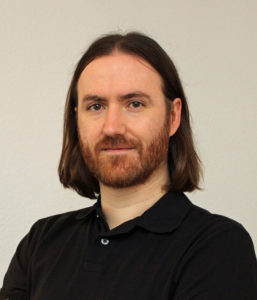
Dr. Christian Schwartz and his junior research group are exploring the regulation of the immune response of innate T helper cells. One of their important goals is to understand how these interactions are regulated in connection with obesity. His research focuses in particular on type 2 immune responses that prevail in conjunction with allergies, parasite infections, homeostasis of fatty tissue and wound healing. More than half of the adult population in Germany and one in six children are already overweight or obese. This chronic condition often triggers other diseases such as cardiovascular disease, type 2 diabetes and certain types of cancer. That apart, other inflammatory processes are also connected to excess weight and obesity, for example allergies such as atopic dermatitis or asthma, poor wound healing and tissue regeneration, as well as an increased risk of bacterial wound infections. As the underlying processes are not yet adequately understood, the aim of the junior research group is to understand the immunological and molecular mechanisms that cause the peripheral inflammation connected to obesity.
Dr. Jane Müller
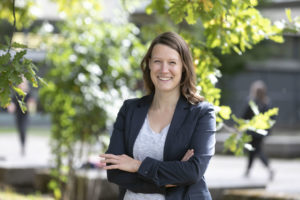
Name of the junior research group: DiSoJu Digitale Souveränität Jugendlicher (DiSoJu Digital Sovereignty of Adolescents)
In her junior research group, Dr. Jane Müller is exploring digital sovereignty as a term and to what extent it is suitable for being used in connection with people. The junior research group uses the concept of digital sovereignty to analyze various constellations for the interaction between people and media and explores the issue of to what extent (relative) sovereignty is possible against the backdrop of digitality. Digital sovereignty is not designed as an attainable or desirable condition for individuals. During the course of the project, the junior research group will design a theoretically and empirically feasible concept for digital sovereignty.
Dr. Stefan Münster
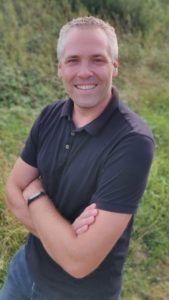
Research topic: The role of physical forces between epithelia and their environment for the morphogenesis of tissue
The Emmy Noether group led by Stefan Münster investigates the biophysical foundations of morphogenesis, which is the process during which organisms gain their shape during development. The focus of their work lies on the mechanical forces that bring the growing tissue “into shape”. The group is particularly interested in the forces that are generated between tissues and their environment. These tissue extrinsic forces are in equilibrium with forces generated within the tissue (tissue intrinsic forces) and significantly influence the breaking of symmetry of the resulting tissue folds, which then enables complex structures to form. The group uses high-resolution light microscopy, automated image analysis, genetic and biophysical manipulation and mathematical modeling of tissue forces and deformations to provide the basis for measuring the microscopic mechanisms that drive morphogenetic processes in quantitative terms. During its investigations, the group uses the embryonic development of the red flour beetle (Tribolium castaneum) as an in vivo model in order to improve the basic understanding of the physical principles of morphogenesis. In addition, the group uses tissue cultures to discover the principles required to create complex architectures in multi-cellular ex-vivo systems such as organoids.
Dr. Gloria Lutzny-Geier
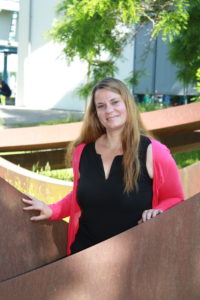
Research topic: Tumor microenvironment interaction (Microenvironment working group)
B cell lymphoma tumor cells require stimulating signals from the surrounding microenvironment to survive. The aim is to understand how various signal paths of the microenvironment and the tumor itself are activated. The group is therefore investigating the regulation mechanisms of tumor cells during the interaction with the microenvironment in a three-dimensional environment and the means of intervening in these modulations in bone marrow niches in order to develop new approaches for therapy. We also use the 3D cell structure principle with solid tumors such as breast cancer. Generating primary organoids provides us with the opportunity to characterize the communication and migration of immune cells and the potential of tumors for forming metastases.
Dr. Anna-Maria Liphardt

Research topic: Changes in musculoskeletal function caused by rheumatic-inflammatory diseases
This research group investigates how rheumatic-inflammatory diseases change musculoskeletal function. Tissue in the musculoskeletal system (e.g. bones, cartilage, muscle and tendons) is characterized by varying properties and a high level of adaptability and stresses caused by mechanical stimuli play an essential role in the regulatory cycle of tissue adaptation. Changes in the morphology of the musculoskeletal system become apparent early on in the form of changes in function, which in turn have a detrimental effect on the health of tissue in the long term and vice versa, since changes to the characteristics of tissue, triggered by pathological processes, also lead to changes in function. One focal area of this working group is the identification of functional and biochemical biomarkers for changes in disease activity and musculoskeletal homeostasis. In immobilization models (bed rest/microgravity), we investigate the effects of an extreme reduction in mechanical stress on the musculoskeletal system without the additional effects of disease or injury.
Dr. Andreas Sagner
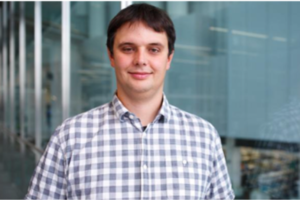
Research topic: Temporal pattern formation in the embryonic nervous system
The nervous system of vertebrates is one of the most complex systems of organs in the entire animal kingdom. The function of the nervous system is based on a large number of neurons with varying molecules and functions that have to be correctly specified and connected to each other during embryonic development. Previous work has demonstrated that spatial signals in the embryonic nervous system play an important role for the formation of various classes of nerve cells. However, these signals are by no means sufficient to fully explain the diversity of nerve cells. My current work has revealed a previously unknown temporal axis to neuronal subtype specification that further divides distinct classes of neurons. This axis depends on cohorts of transcription factors that are specific for early, intermediate, or late-born neurons. The key aims of my research group are to: 1.) understand the signals and genetic networks that control the temporal pattern formation of neurons, 2.) characterize how spatial and temporal signals are integrated to form specific types of neurons, and 3.) determine the contribution of the temporal axis to neuronal diversity and correct connectivity in the adult spinal cord.
Dr. Kilian Schober
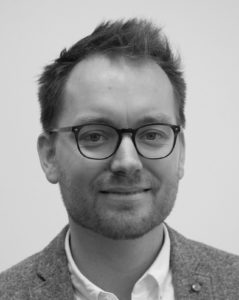
Research topic: Understanding & engineering human T cell immunity
T cells are crucial to our immune system. Using the T cell receptor, they detect target structures (known as antigens) on infected cells or the organism’s own cells, or degenerate cells in the case of tumors. The aim of our working group is to understand the basic mechanisms behind T cell immunity and develop new therapies for infectious diseases, tumors and autoimmune disorders. We use cutting-edge biomedical methods such as single cell RNA sequencing and, in collaboration with the Helmholtz Zentrum Munich, artificial intelligence in order to track the fate of antigen-specific T cells. As a human in vivo ‘model’, we are focusing on cohorts of people who have been vaccinated against SARS-CoV-2 or yellow fever. Finally, we use our findings to specifically ‘program’ T cells using the genetic scissors CRISPR/Cas9 to make them particularly effective at fighting infected cells or cancer cells, whilst retaining their natural properties as far as possible (physiological engineering).
Dr. Alison Mitchell

Research topic: Galactic cosmic rays and pulsar environments
The search for the origins of cosmic rays — high energy particles from space — has made enormous progress since their discovery over a hundred years ago. However, the origins of the most energetic cosmic rays in our Galaxy remain enigmatic. Although previously disfavoured, powerful pulsars have recently reemerged as top candidate sites for particle acceleration to very high energies. Using data from the HESS telescopes based in Namibia and the future Cherenkov Telescope Array, we can use gamma-rays to look in detail at cosmic rays in pulsar environments. Combining this with multi wavelength information, we aim to build a more complete understanding of these systems and the role that cosmic rays play in the dynamical environments of pulsars.
Dr. Manuel Keith
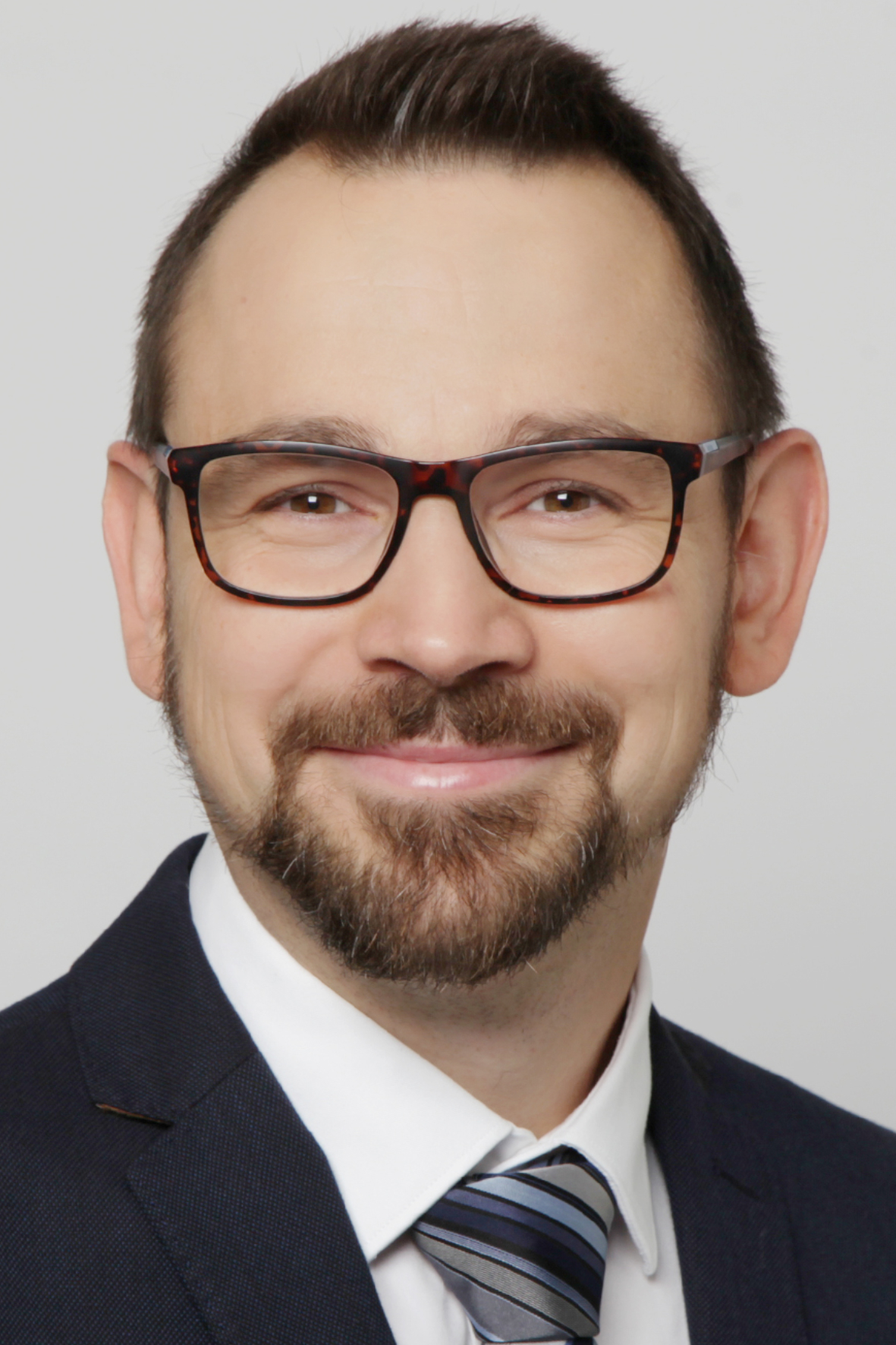
Research topic: Enrichment of critical metals in the Earth’s crust
Ensuring sufficient supply of critical metals for the transition to renewable energy and for a sustainable future is a major challenge for the European Union. However, increased use of renewable energy and electrification requires large quantities of raw materials such as copper and cobalt and it will take several decades to meet this demand via recycling. This means these metals must be sustainably mined and our research is making a considerable contribution to finding the best deposits and processing methods. We are investigating the distribution of metals and semi-metals in the Earth’s crust and use modern methods of analysis to understand the transport and enrichment of these elements. Looking to the future, we want to contribute to securing the supply of critical metals as well as increasing the sustainability of mining processes.
Dr. Markus Schiegg
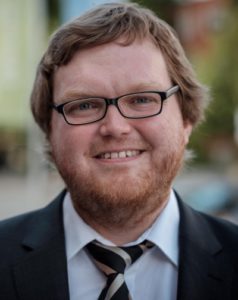
Research topic: Flexible writers in language history
Variation is a central feature of natural languages. Up until now, very little research has been conducted into how flexible historical writers in the general population were in their use of language. In my research group, we are collating a digital corpus comprising mainly of letters from patients in German and British psychiatric hospitals in the 19th century, which were often not sent to their intended recipients and are still in the archives. As the letters are from individuals and addressed to various recipients often over a longer period of time, these texts are particularly suitable for analyzing variations produced by individuals and changes in language, which can also be influenced by aging and various medical conditions.
Dr. Andrea Thoma-Kreß
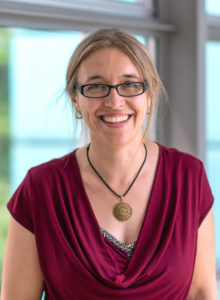
Name of junior research group: Retroviral pathogenesis with a focus on HTLV-1 and adult T-cell leukemia
Research topic: Transmission of viruses via breast milk
Our working group focuses on the transmission and pathogenesis of the tumor-initiating retrovirus human T-lymphotropic virus 1 (HTLV-1). More than 10 million people across the globe, particularly in South America, the Caribbean, Japan, Sub-Saharan Africa and Central Australia, are infected with HTLV-1, with the majority of them unaware that they have contracted the virus, as the infection does not initially display any symptoms. After ‘slumbering’ undetected for decades, however, the virus can trigger serious diseases such as an aggressive form of leukemia. Our junior research group, which has received funding from the Federal Ministry of Education and Research, focuses on obtaining a better understanding of how HTLV-1 is transmitted via bodily fluids containing cells such as breast milk. Breast milk offers a wide range of health benefits, and in a number of the countries in which the virus is widely spread limited resources mean that using replacement products is simply not an option. The long-term aim of our working group is therefore to develop preventative strategies which effectively combat the HTLV-1 infection whilst still allowing breastfeeding.
Dr. Hatem Elliesie, MLE
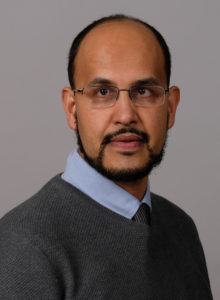
Research focus: Identity-shaping practices and subcultural lifestyles in the bouncer, martial arts, rap and shisha bar milieux.
My research project focuses on exploring patterns of self perception and ascription of certain characteristics by others to members of large clans in Germany with family roots in the Middle and Far East. I hope to investigate in more detail areas which research has until now neglected, such as the bouncer milieu, the weight lifting and martial arts communities, certain areas within the gangsta rap scene and the societies flourishing around shisha bars. The aim of my research is to gain well-founded and detailed scientific insights into subcultural lifestyles and habits of the various groups. I hope that this fundamental research will lead to a better understanding of clan structures, how they interact with each other, the attitudes of various generations within the clans and their interactions in and with what we refer to as the majority society.
Dr. Johannes Fürst
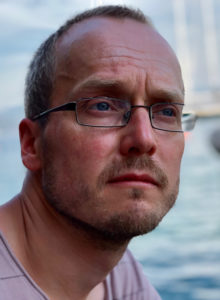
Research topic: The strategy for the future for global alpine glacier prognoses
The retreat of glaciers worldwide is increasing and the loss of ice associated with it has been dominating the contribution of the cryosphere to changes in sea levels for decades now. Glaciers have become symbolic of the effects of climate change in general. In our working group, we are developing a new and consistent method for dynamic predictions of ice levels in glaciers all over the world under future global warming conditions. Systematic use of the flow of information from satellite remote sensing is at the heart of this modeling method. Transient assimilation techniques are used for this purpose. As is the case with predicting the weather, every single measurement taken will be incorporated into the forward simulation in real time to provide as much data for the prognoses as possible.
Dr. Nadja Ray

Research topic: Multiscale modeling and analysis of porous media applications with evolving microstructures
Nadja Ray works in the field of applied mathematics. She is interested in multiscale modeling and porous media applications. She thereby particularly focuses on problems including evolving microstructures, e.g. due to chemical dissolution-precipitation reactions. Moreover, in one of her projects, she investigates influencing factors of the formation and turnover of soil microaggregates, and their impact on soil functions.
Dr. Nadia Müller-Voggel
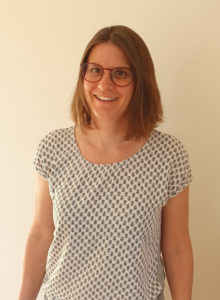
Research topic: From acute to chronic – in search of neurophysiological markers of tinnitus
How can our brain perceive a tone that is objectively undetectable? This issue is highly relevant to about 20% of our population suffering from chronic tinnitus. Perception is not an accurate representation of the surrounding environment, but an active process of our brain, with which we interpret our environment and which, in the case of tinnitus, can lead to phantom perception. My Emmy Noether research group aims to find out which processes in the brain cause tinnitus to develop and become chronic. We are investigating this by recording activity at different stages of tinnitus development, at rest or while subjects perform tasks, during conditions such as drawing their attention to or away from the tinnitus or being in a positive versus negative emotional state. In this way, we hope to better understand which neural processes lead to the perception of a sound and how the unwanted perception of a phantom tone could be effectively treated.
Dr. Heiko Bruns
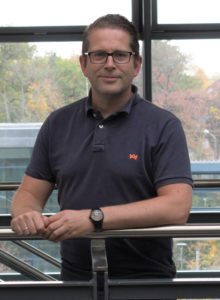
Research topic: Macrophages as the first line of defense in leukemia and lymphomas
In most tumor diseases, numerous macrophages (the feeding cells of the immune system) are in close proximity to the cancer cells. Although macrophages are theoretically able to recognize and eliminate tumor cells, they often no longer perform this task correctly. In our working group, we investigate which mechanisms macrophages use to detect and eliminate tumor cells, and whether these mechanisms are dysfunctional in the macrophages in the tumor, especially in lymphoma diseases. We are particularly interested in phagocytosis and the uptake of tumor cells. The long-term goal of our working group is to reactivate the macrophages in the tumor therapeutically for tumor control.
Ehemalige FAU Nachwuchsgruppenleitungen
Prof. Dr. Matthias Braun
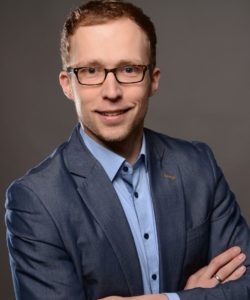
Research topic: Ethics and governance of new technologies
Matthias Braun’s research deals with the opportunities and challenges of new technologies from a social-ethical perspective. He hopes to gain a better insight into how new technologies may change institutions and ways of life within society, and explore possible options for shaping these changes in a responsible manner. Matthias Braun has developed an approach based on set ethical practices that systemically combine various methods.
Prof. Dr. Sebastian Zundler
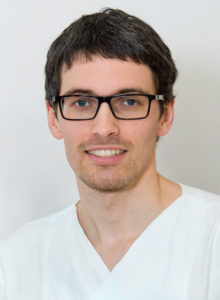
Research topic: Influence of immune cell migration on mucosal wound healing and intestinal inflammation in chronic inflammatory bowel diseases
My research group deals with chronic inflammatory bowel diseases such as Crohn’s disease and ulcerative colitis. In these diseases, an interaction of environmental factors with genetic factors leads to an abnormal immune reaction in the intestine, which leads to recurrent inflammatory flare-up. It is not currently possible to cure the disease with medication. Our group is particularly interested in the migration of immune cells in the context of disease. These processes can already be successfully influenced using medicines, but they have not yet been sufficiently researched.
Prof. Dr. Silvia Budday
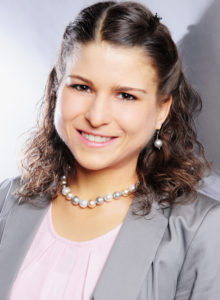
Research topic: Brain Mechanics Across Scales (BRAINIACS)
Our research deals with the mechanics of the brain. While mechanical aspects have been neglected for a long time in brain research, according to the latest findings, they play an important role in brain function. An exciting example is the distinctively folded structure of the human brain, which is essential for higher cognitive functions. We propose that mechanical forces contribute to the folds in the human brain, which originally has a smooth surface. By combining experimental methods, modeling and simulation, we are developing computer models to help diagnose diseases and optimize treatment methods.
Silvia Budday was appointed Professor (W3) of continuum mechanics (focus on biomechanics) at FAU on March 1, 2023.